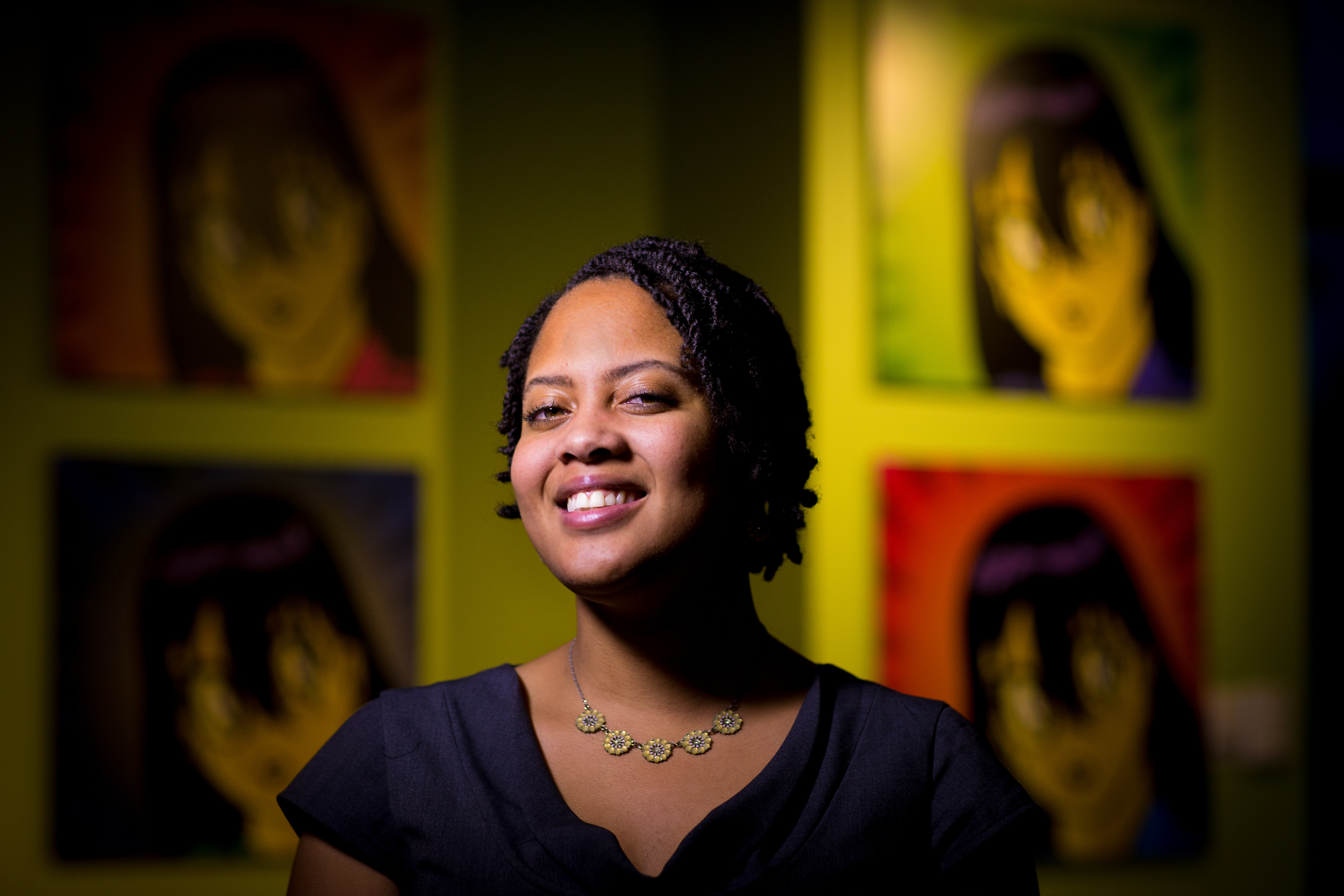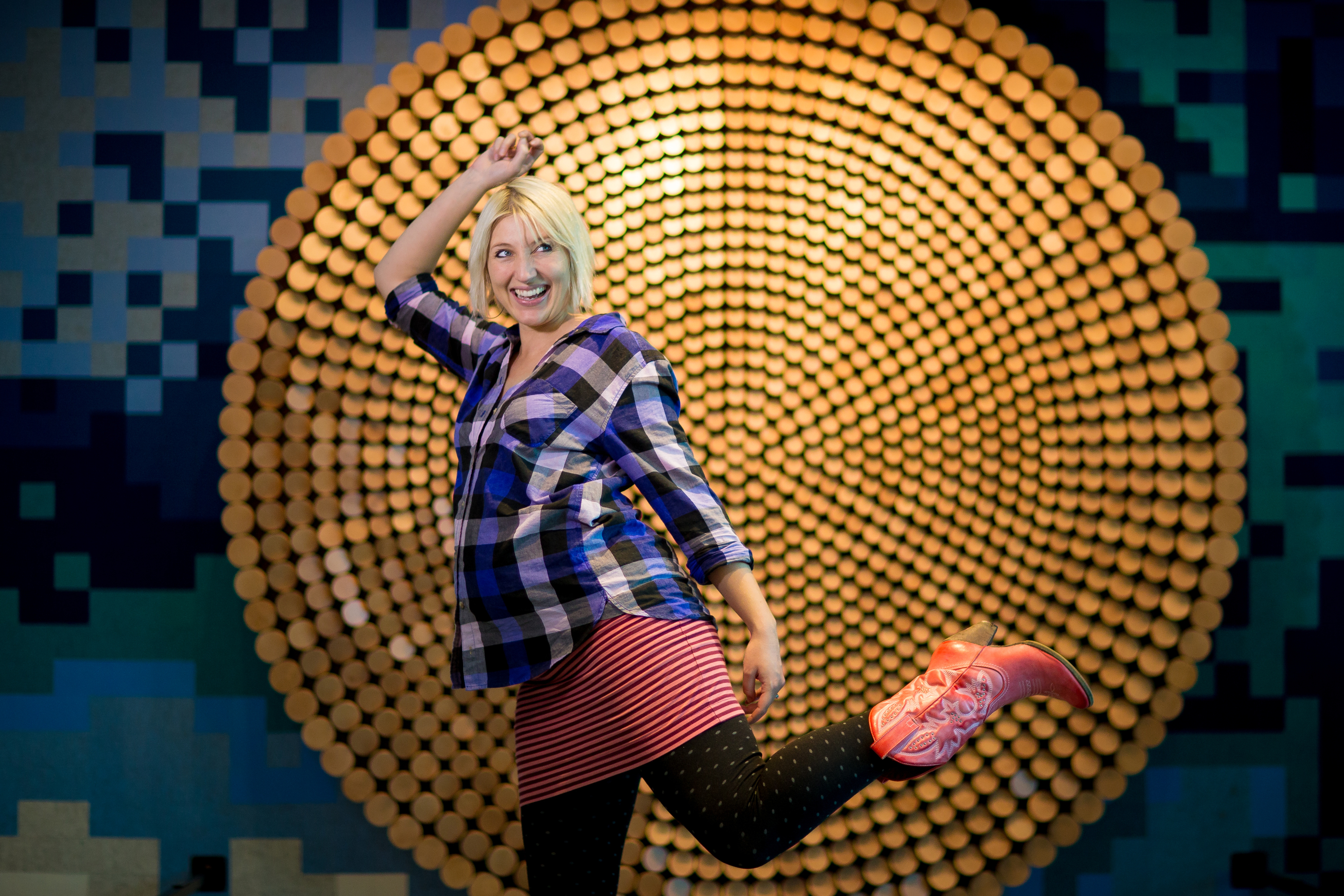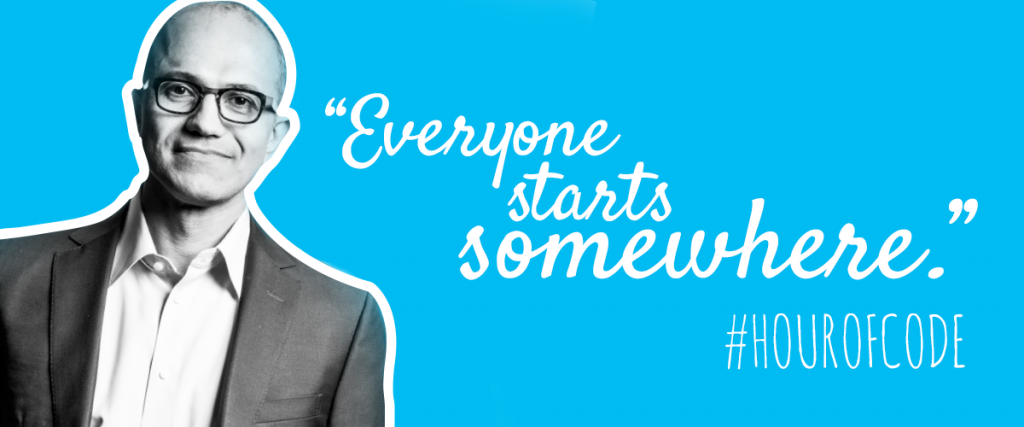
When it comes to coding, ‘Everyone starts somewhere,’ and these Microsoft pros are proof
When Jasmine Lawrence was 8, she saw the movie “Bicentennial Man,” thought robots were the bomb, and decided she wanted to be involved with them somehow. Emily Fickenworth wasn’t much into robots, but she did grow up loving theater, and developed a passion for costume design. Karishma Maraj watched as her older sister created computer games, and was captivated by it, wanting to do the same thing.
All three started from different places and stages at their lives ― and all three learned how to code. They say that if they can do it, anyone can. They also say that everyone does start somewhere, but the important thing is starting. Now, Microsoft YouthSpark is making it even easier for students to learn to code. The program is expanding its efforts worldwide to empower young people through computer science education.
News of the program’s expansion is being shared as part of Computer Science Education Week, which takes place Dec. 8-14. Also being announced, to help those who are new to coding: Microsoft Imagine, a program that will connect student developers of all ages and skill levels with the tools and knowledge they need to create, code and develop their ideas. Another key event this week is Hour of Code. As a founding supporter of Code.org, and a leading partner in Hour of Code, Microsoft is working with the industry on a grassroots effort to inspire 100 million young people worldwide to try coding.
“Understanding the world ― not just the physical world you live in, but also the information world you live in — is very important, not just to be a consumer of it but to be a creator of it,” says Kevin Wang, founder and “ringleader” of Microsoft’s TEALS (Technology Education and Literacy in Schools) program, which puts computer scientists alongside teachers in high school classrooms around the country.
“That’s the truly empowering thing, being creative, and computer science lets you do that,” he says. “Otherwise you’re playing ‘Angry Birds’ all day. But how powerful is it if you can make the next ‘Angry Birds’? That’s completely different.”
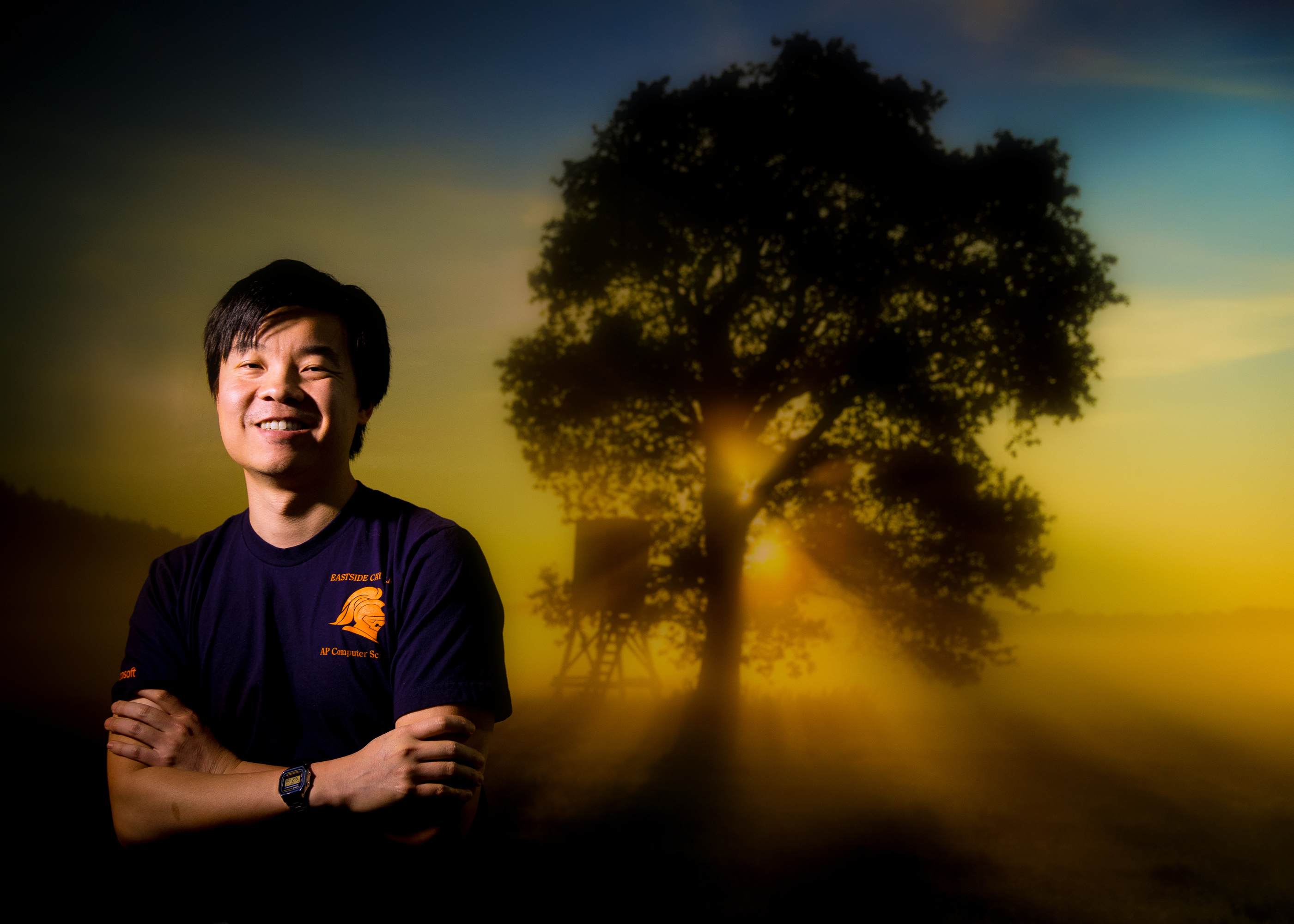
Jane Broom, Microsoft’s community affairs director, agrees. “Despite the exponential growth of our industry, today too many people around the world simply do not have access to computer science education,” she says. “And while many people now know how to utilize technology, far too few have the skills needed to create technology. This is our industry’s opportunity divide. It is our responsibility to help close it ― especially for underrepresented populations.”
“With the launch of Microsoft Imagine we want to meet students, whatever their age and skills, with the right tools, projects, and opportunities so they can continue on their journey to learn to code,” says Steve Guggenheimer, corporate vice president and chief evangelist, DX. “Whether it’s a 10-year-old making her first game or a university senior building skills and projects for their first job application, aspiring developers can access age- and skill-appropriate courses, competitions and communities that can help turn their ideas into reality and support them on their educational journey.”
Jasmine Lawrence took her first coding class, for C++, in high school. Learning to code “made me feel powerful because I was creating something. I was speaking a whole different language,” she says. “It just felt really, really cool.”
Today, at 23, she works for Microsoft, on the Xbox team, and urges everyone to learn how to code. “It really is a great skill,” she says. “Even if you end up not doing programming yourself, the mentality of it is about logic, and finding new ways to solve problems. And that transcends coding, transcends being a programmer.” It is, she says, a “translatable” job skill.
Lawrence earned her bachelor’s degree in computer science from Georgia Tech. In addition to her full-time job at Microsoft, she’s in a graduate program at the University of Washington, studying human-centered design and engineering, and Microsoft is helping to pay her way.
“I know how to build things ―now I want to build things that people will actually use and that are helpful to solve our human problems,” Lawrence says.
Emily Fickenwirth, a user experience designer for Microsoft, was more interested in costumes than code as she went through school. She got her bachelor’s degree in costume design.
But after graduating, Fickenwirth realized that it was design, in particular, that appealed to her, not the business of theater. She went back to school, receiving a degree in design from Seattle Central Creative Academy.
“When I graduated from a design school, I never thought I’d be working for a tech company,” Fickenwirth says. But she has worked for Microsoft for five years now, starting first with Xbox, and now with Project Siena, an app that lets people who don’t know how to code create apps of their own.
Fickenwirth remembers when she first learned coding, and how “daunting” it seemed at first.
“There were lot of times when I tried something and thought it should work, and it didn’t work, and I didn’t know why,” she says. “There’s a lot of trial and error ― like, this thing seems so easy, why is it not just not working? But once you push through it, and once you know how to do that thing — say, something like creating an image or a sound ― the next time it comes up and you can do it in two seconds — and it’s awesome ― you’re like, ‘I earned this! I totally earned this.’”
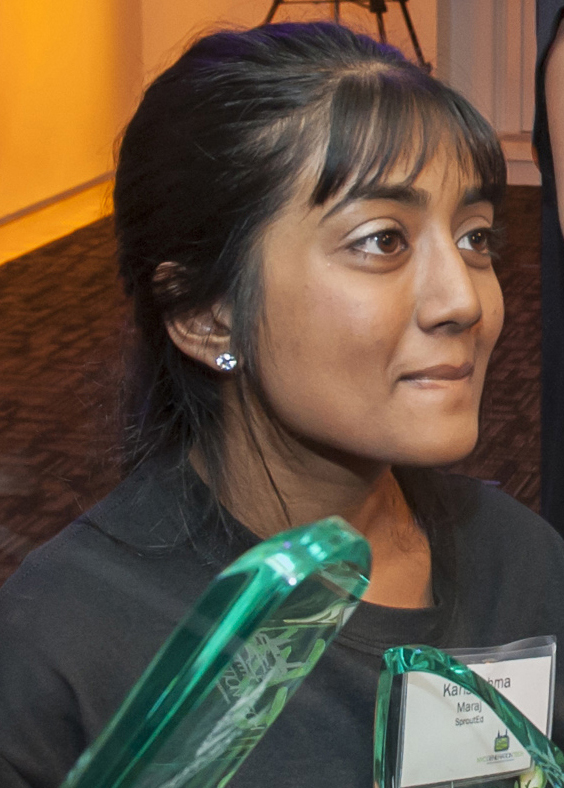
Karishma Maraj is 16 now, a junior at Brooklyn Technical High School. Last summer, she was an intern for Microsoft. She got the internship after participating in the Network For Teaching Entrepreneurship NYC Generation Tech (GenTech) program and competition during the summer of 2013. The goal is to educate and inspire New York City high school students to “transform the world through tech-based innovations,” and to pursue careers in entrepreneurship and technology.
Maraj was president of the winning team that developed the My City, My School app. The app helps creates an environment for students around the country to collaborate, get organized and discuss school-related topics and events.
“When I was first starting to learn to code, in the GenTech program, I learned there are a lot of things to take into consideration,” Maraj says. “But I was very interested in the whole concept of it, that you could make an entire website from scratch, in a matter of hours.”
At school, Maraj has enjoyed being involved in the arts: plays, chorus, dance. She was in the eighth grade when she watched her older sister work on developing a computer game for a class. She was fascinated, and determined to learn more.
“When I am coding, I genuinely enjoy it, I like seeing the end product,” she says. “You put in so much effort and you come out with a beautiful, functional website, for example. Also, there’s a lot of problem solving involved to get coding to carry out a function that you want, and I like problem solving.”
Emily Fickenwirth says anyone who wants to learn coding should “start simple,” and not put “too much pressure on yourself.”
“You might not be able to make a complicated program (at first), but it’s the small victories that are going to be rewards,” she says. “Like, ‘Oh, I got that image to show up, or that border is supposed to be where it is now.’ You feel a real sense of accomplishment and it spurs you on.”





